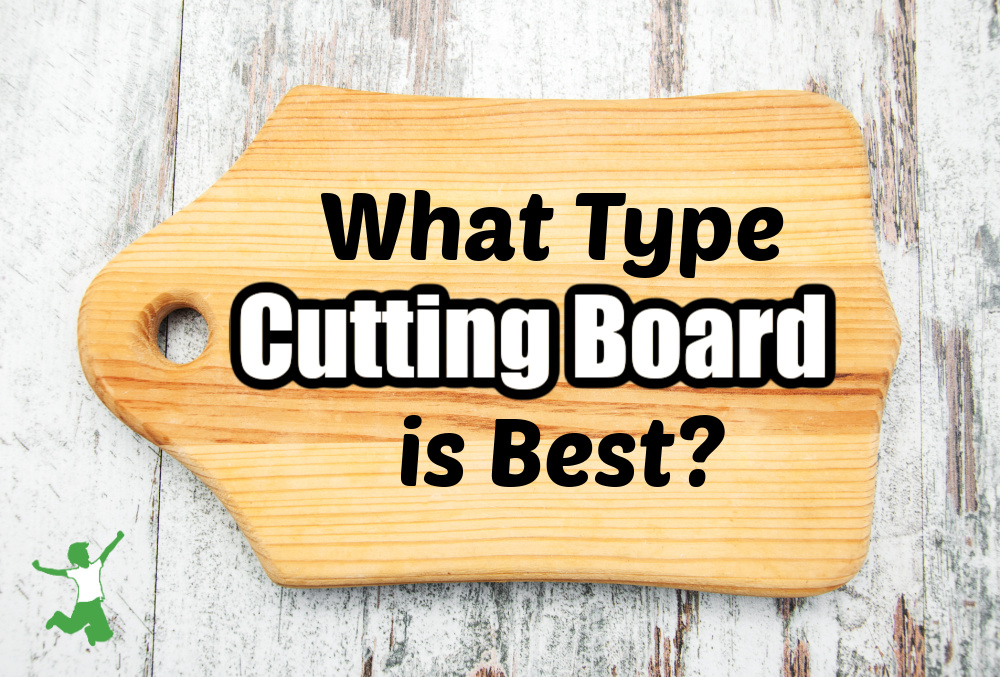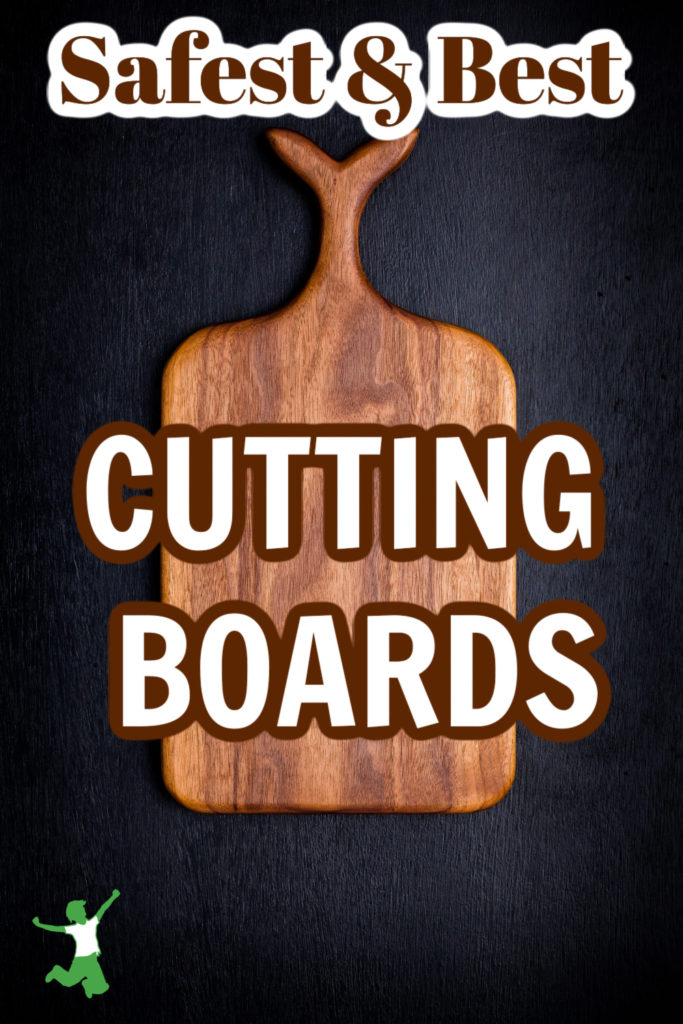Comparison of the various types of cutting boards and whether plastic is truly safer and better than wood as claimed.
Cutting boards of various shapes and sizes are very important tools in any home where meals are freshly prepared.
As for the best cutting boards, however, which material is truly optimal for food prep safety?
Are plastic or wood cutting boards preferable?
The answer might surprise you!
Restaurants Consider Plastic Cutting Boards Safer
Plastic has long been considered superior to wood.
For this reason, people have generally preferred this type of material in the name of food safety.
The prevailing wisdom is that plastic is less hospitable to bacteria, and therefore, would be safer.
Most restaurants use plastic for this reason. It is considered more sanitary by the industry because it is easier to wash and does not absorb food juices. (1)
But…is this really true?
Research Compares Plastic vs Wood
Research simply does not bear this out in practice, however.
As it turns out, wood is much less likely to harbor pathogenic bacteria than plastic!
Wood by far makes for the safest cutting boards to use in your home!
The research conducted by food microbiologists at the College of Agricultural and Life Sciences at the University of Wisconsin-Madison discovered that wood somehow eliminates bacteria but plastic does not. (2)
The manner in which the bacteria perished on the wood but not on the plastic is not known.
The scientists found that 3 minutes after contaminating a wooden cutting board, 99.9% of the pathogenic bacteria had died, while none of the bacteria died on plastic.
In addition, bacteria held at room temperature overnight on a plastic cutting board increased in number.
Surprisingly, the researchers could not find any bacteria present on wood treated in exactly the same manner!
So it seems that the prevailing “wisdom” that plastic is safer than wood is not true after all.
Wooden cutting boards are the best and safest choice after all.
Why is Plastic Unsafe?
I was happy to discover this information as I have always intuitively preferred wood over plastic cutting boards.
For one thing, wood is more stable than plastic during chopping. In my experience, you are far less likely to experience an injury when chopping meat and veggies on wood.
In addition, I have always thought that little bits of plastic or chemicals must be somehow released into the food from the repeated exposure to a sharp knife.
I have not seen evidence of this in the research. It just seemed to be common sense. Hence, I have stayed away from plastic and have always stuck with wood.
In particular, I have steered clear of plastic cutting boards with special antimicrobial surfaces.
Any product that boasts that it is antimicrobial screams “hormone-disrupting chemicals”, so I avoid them like the plague.
Best Type of Wood
For the best cutting boards, it is best to stick with old-fashioned wood block.
Do not use cheaper boards made with bonded wood pieces. The glue holding the board together can be toxic.
In addition, avoid “pre-oiled” wood boards. Oil them yourself at home with unrefined coconut or olive oil.
My choice is unfinished organic bamboo butcher block (like this one) as it is a sustainable, fast-growing natural resource that is manufactured in a safe manner as well.
Are Probiotics the Reason Wood is Best?
As an aside, I have a theory about why pathogenic bacteria are unable to survive on wood boards but instead grow exponentially on plastic.
Lactobacilli is a beneficial bacteria on the surface of all natural things. This includes our own skin. This beneficial microbe kills off pathogens that are within its vicinity.
This is why grassfed raw milk is safer than pasteurized. The naturally occurring probiotics “crowd out” any pathogens that might get into it.
Heat-treated foods just get contaminated if the same thing were to happen.
Perhaps this is the same method for how pathogens on wood cutting boards are destroyed within 3 minutes, yet this same thing does not happen on plastic?
(1) Why Don’t Restaurants Use Wooden Cutting Boards
(2) Wood Cutting Boards, Not Plastic, Are Safer for Food Prep










Interesting info ~ I have both wood and plastic, but wood feels “right” with my knives.
I assume mineral oil is not desirable on cutting boards since it’s petroleum-based, and I had heard that olive oil goes rancid. I appreciate the tips above to use antimicrobial, antifungal coconut oil on cutting boards. Hadn’t thought of that. I just got a big bin of expeller pressed CO for cooking and some raw centrifuged for smoothies from Wilderness Family Naturals — would either work equally well for cutting board purposes? Any thoughts out there?
Is Plastic Really Better than Wood for Cutting Boards? – The Healthy Home Economist http://t.co/Wi3tx5G
We have two bamboo boards we use and have had them for at least 6 or 7 years. One is long and narrow and the other is a square shape. I love them and find that they are what I use for most of my cutting needs. We also have glass cutting boards which we only use for slicing meats (mostly because it’s easier to cut them on glass). We make sure to sharpen our knives when we are finished. I ditched my plastic cutting boards years ago, as I have many other plastic pieces from my kitchen. For storage I use glass containers, plates and bowls from our cupboards, and also wax paper or tin foil. I have completely stopped storing any of my produce in plastic in the produce drawers in my refrigerator. Instead, I take them out of the plastic and put down a roll of wax paper on the bottom of the drawer.
I prefer wood, but I have some plastic ones and hate them! Time to replace them all with wood and bamboo 🙂 Thanks for the info!
Is Plastic Really Better than Wood for Cutting Boards? – The Healthy Home Economist http://t.co/k0SrVCx
Maple wood…. excellent! have had a huge kitchen island with a 2″ thick maple top
for over 40 years… It is beautiful, easy to care for and the best material for your
knives. wood is very forgiving and “heals” nicely… I just wash w soap/water/rinse then
use mineral oil several times a year and let it soak in overnight (don’t gasp) for a beauty treatment… mineral oil also works beautifully on slate, etc. just wipe any excess of
w paper towels and you’re good to go ..
As for logging: we have many acquaintances who are loggers…. I defend them and hate the propaganda out there against them. trees die… culling and maintaining forests is a science
to get the best, healthiest trees growing. Don’t be so quick to fall for false information. always consider the source ! Wood: another gift from God
Is Plastic Really Better than Wood for Cutting Boards? – The Healthy Home Economist
http://ow.ly/68KqZ
I bought a bamboo cutting board a couple of years ago, and it has seen heavy duty work, since we chop up chicken backs for our dogs’ breakfast about 5 days a week. I was just noticing that you can barely see any scratches, much less gouges, in the surface! it is one of the best cutting boards I have owned and would recommend one to anyone. I do have a glass one I use for mostly cheese and presentations. I like the bamboo better overall.
I agree. My bamboo cutting boards are so much more durable than the hardwood cutting boards I have had in the past.